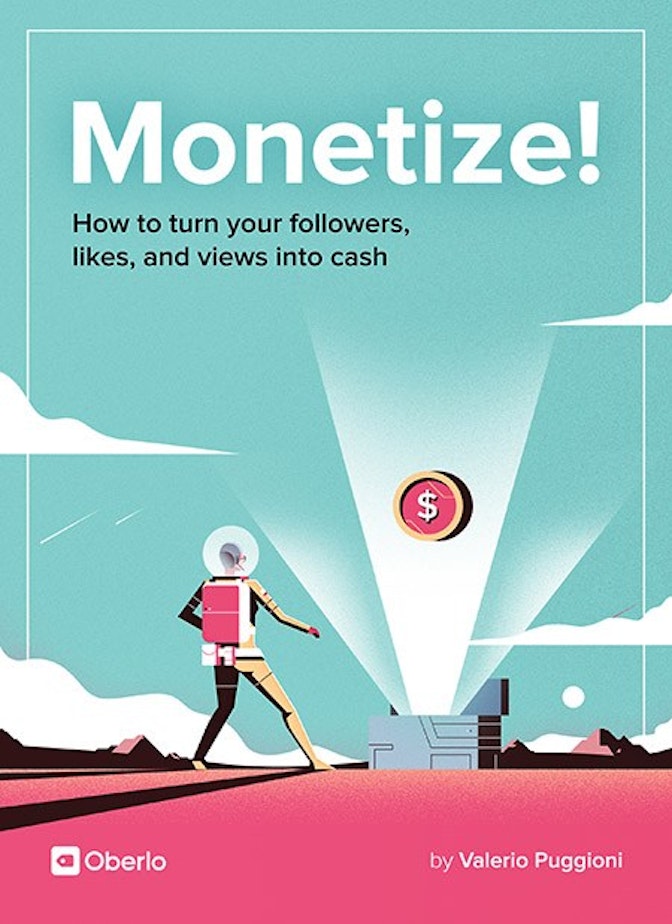Stop me if you’ve heard this one before.
Jenn, a customer service agent at a car leasing company, is fed up with her job.
Her pay’s lousy, she’s on edge with customers yelling at her over the phone all day (they actually treat her worse in person), and her boss ignores all her suggestions, even though she knows he could make her job a lot less stressful.
Not to mention, the company’s been cutting costs. (Two of her coworkers have already been “let go”, and now she’s worried she’s next).
It could’ve been worse. Much worse.
But Jenn was smart.
She had a backup plan she had implemented several months back. When she began having to worry actively about staying on top of rent, bills, and living paycheck to paycheck.
That’s when she looked at her Facebook support group on drawing comics, where she helps other, more novice artists get a handle on not only their drawing, but selling their work as well.
She didn’t need a million followers. She barely had 5,000 members in her group. But what she did have was an active and engaged community that sought her advice on a daily basis.
Long story short, she started with a small offering:
A comic drawing course for beginners.
And the rest is history.
You’ve probably heard one or more variations of this story throughout the years. It’s become more and more common over time. And with the global economy in the pits, it’s no wonder people with an entrepreneurial spirit are going online seeking opportunities to obtain financial freedom.
Whether the version you’ve heard features your cousin’s best friend or your neighbor’s now-successful Youtube millionaire mechanic, one thing’s for sure:
It’s entirely possible.
And how you go about achieving that financial freedom is what this book is all about.
After we go over a quick introduction on monetization, you’ll learn about how to monetize your blog, we’ll go over all the juicy details about how to monetize social media, specifically Facebook monetization as well as how to make a profit on Instagram. And we’ll also cover the recent favorite, Youtube monetization.
But before we jump ahead of ourselves, let’s go over a few critical concepts.
In this chapter, we’ll cover:
- What is monetization, and is it right for you?
- How to start monetizing what you’ve got
- And the monetization principles you must understand in order to succeed.
In other words, we’ll be digging deeper into the right and wrong ways you can manage your monetization efforts.
Let’s dive right in.



1.1 What is monetization?
In the past, you may have heard people asking about assets they want to monetize. Definitions are available on pretty much every site that’s telling you how to make a profit online.
But here’s the problem:
→ Click Here to Launch Your Online Business with Shopify
None of these definitions are helpful for two reasons:
- They’re too broad.
- They don’t tell you how to go about monetizing what you’ve got effectively.
But before we jump ahead of ourselves, let’s start with a basic definition of monetization.
What is monetization all about?
On the most basic level, and according to most sites about how to earn extra money online, monetization is the act of making something profitable.
But herein lies the most obvious problem:
Just because you can turn a quick profit doesn’t mean you’ll attain financial freedom, or even a reliable long-term side income. After all, the scammer who spams links in Facebook groups all day can also generate a nice profit–until Facebook catches on and you have to do it all over again.
Then you’ll have to rebuild your “brand” from scratch–or worse.
You risk driving your reputation so far into the ground, no one will be willing to go near you anymore, and you’ll start running into trouble with trying to get your credit cards accepted.
In other words, this basic definition won’t do.
Not for us.
With more subtle nuances at play, mainly it’s not just about how to monetize–meaning, it’s about how to do it correctly.
So here’s a more robust definition of what monetization means for us:
Earning money from something of value you provide to your audience.
That’s what monetization means.
After all, there are many, many wrong ways to go about it.
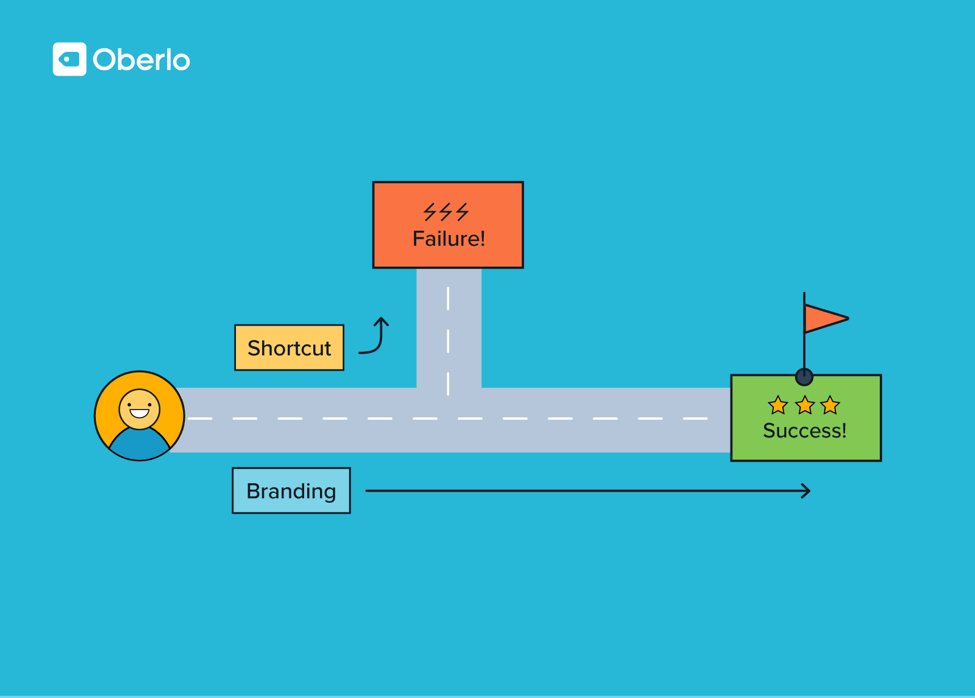
This is obvious. Just think of all the annoying spam emails you receive that you’ll never open. Or recall any of the naysayers you know who come out of the woodwork whenever you mention a new project you’ve been working on.
“I’ve tried that. It didn’t work.”
You’ve heard it before.
Maybe not in this specific context, but you’re familiar with the attitude. Sure, they may be telling the truth. They may really have tried it, and failed.
But ask yourself two questions:
- Why didn’t it work?
- More importantly, why didn’t it work for them?
Monetization works.
That’s just a fact. We can look at the countless examples available online, as well as the numerous relatable examples we’ll come across throughout this book.
And armed with the knowledge of how online monetization can work, you’ll realize there are a few key elements that can make all the difference in succeeding with your monetization efforts.
Can anybody monetize?
This book is for two types of people:
- You’re someone who already has an audience, and you want to know how to monetize.
- You’re someone who’s heard about making money online, and you’re searching for ideas about how to start a side business.
So if you’re a budding entrepreneur who loves skateboarding and you’re already blogging about your favorite techniques, this book is for you. If you’ve got a small audience you’re already actively engaged with, then this book is perfect for you.
Or if you’ve heard about people making money online and you’re just getting started exploring monetization ideas, this book is also for you. So if you’re interested in creating something of value to start building an audience for your monetization efforts, then you’ll find plenty of inspiring ideas in this book.
This is obvious. Just think of all the annoying spam emails you receive that you’ll never open. Or recall any of the naysayers you know who come out of the woodwork whenever you mention a new project you’ve been working on.
“I’ve tried that. It didn’t work.”
You’ve heard it before.
Maybe not in this specific context, but you’re familiar with the attitude. Sure, they may be telling the truth. They may really have tried it, and failed.
But ask yourself two questions:
- Why didn’t it work?
- More importantly, why didn’t it work for them?
Monetization works.
That’s just a fact. We can look at the countless examples available online, as well as the numerous relatable examples we’ll come across throughout this book.
And armed with the knowledge of how online monetization can work, you’ll realize there are a few key elements that can make all the difference in succeeding with your monetization efforts.
Can anybody monetize?
This book is for two types of people:
- You’re someone who already has an audience, and you want to know how to monetize.
- You’re someone who’s heard about making money online, and you’re searching for ideas about how to start a side business.
So if you’re a budding entrepreneur who loves skateboarding and you’re already blogging about your favorite techniques, this book is for you. If you’ve got a small audience you’re already actively engaged with, then this book is perfect for you.
Or if you’ve heard about people making money online and you’re just getting started exploring monetization ideas, this book is also for you. So if you’re interested in creating something of value to start building an audience for your monetization efforts, then you’ll find plenty of inspiring ideas in this book.
[highlight]If you want to explore profitable business ideas right away, check out our video on 10 easy Internet monetization projects you can start today.[/highlight]
How monetization works
If you have something of value you want to monetize, meaning you want to make money through your audience, then there are a few general principles you should be aware of. We’ll dig deeper into these principles in the next section, but for now, let’s go over an important but frequently overlooked idea:
Building a business is not easy.
It’s hard work. But it’s rewarding work, and today, the Internet’s matured to a stage where opportunities to make a profit online are aplenty, and embarking upon a monetization journey has never been easier.
So how does monetization work, in a nutshell?
You provide something to an audience that perceives value in it.
That means it must serve a specific need or interest for your target audience. The trick is that the value that’s perceived must be greater than the amount you’re asking for.
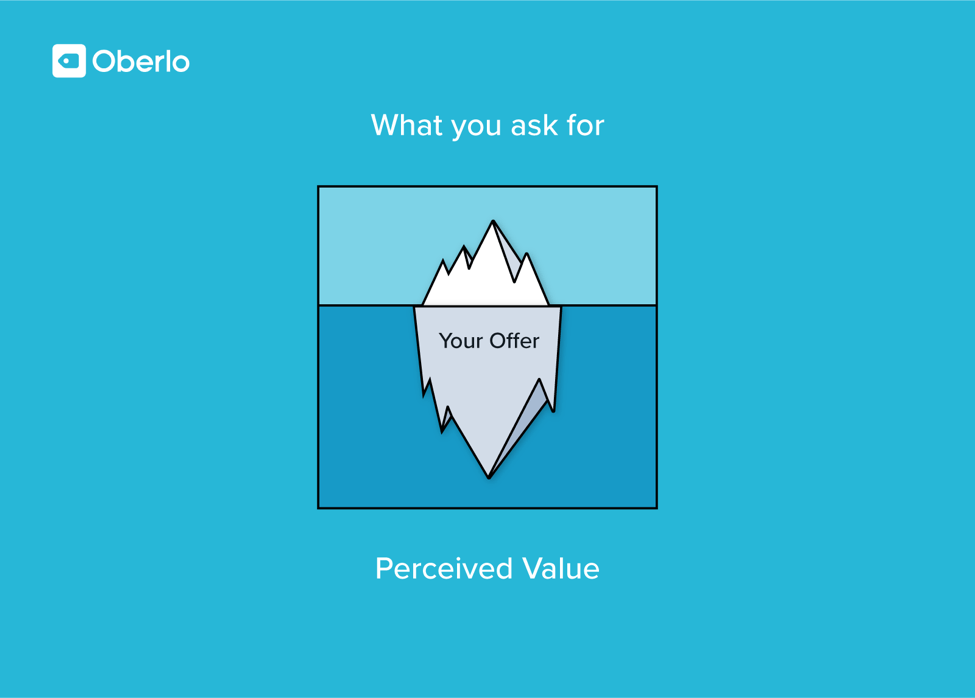
Monetization: How much money can I make?
So how much money do you stand to make online?
The simple answer? It depends.
It’s a bit like asking, “How much does a blogger make versus an Instagram influencer?”
Or how about, “How much can a CEO make versus an agency owner?” What type of agency? CEO of what? As you can see, there are simply too many factors at play.
But if these are the types of questions you’re asking, I’ve got something important to tell you.
And it just might help you change your mind and shift gears, and hopefully inspire you to aim for something more meaningful than just monetary compensation.
Let me explain:
Many online business owners (yes, even successful ones) tend to focus on what are called “vanity metrics”. These are metrics that make you feel good, but they don’t actually serve your business goals. (They don’t contribute to making you money!)
Examples of vanity metrics include page views in Google Analytics or likes on your Facebook page.
In fact, in certain Facebook groups that are filled to the brim with spammers, people frequently post offers to exchange page likes. (See image below). This is a waste of time, and definitely more hurtful than helpful when trying to monetize social media.
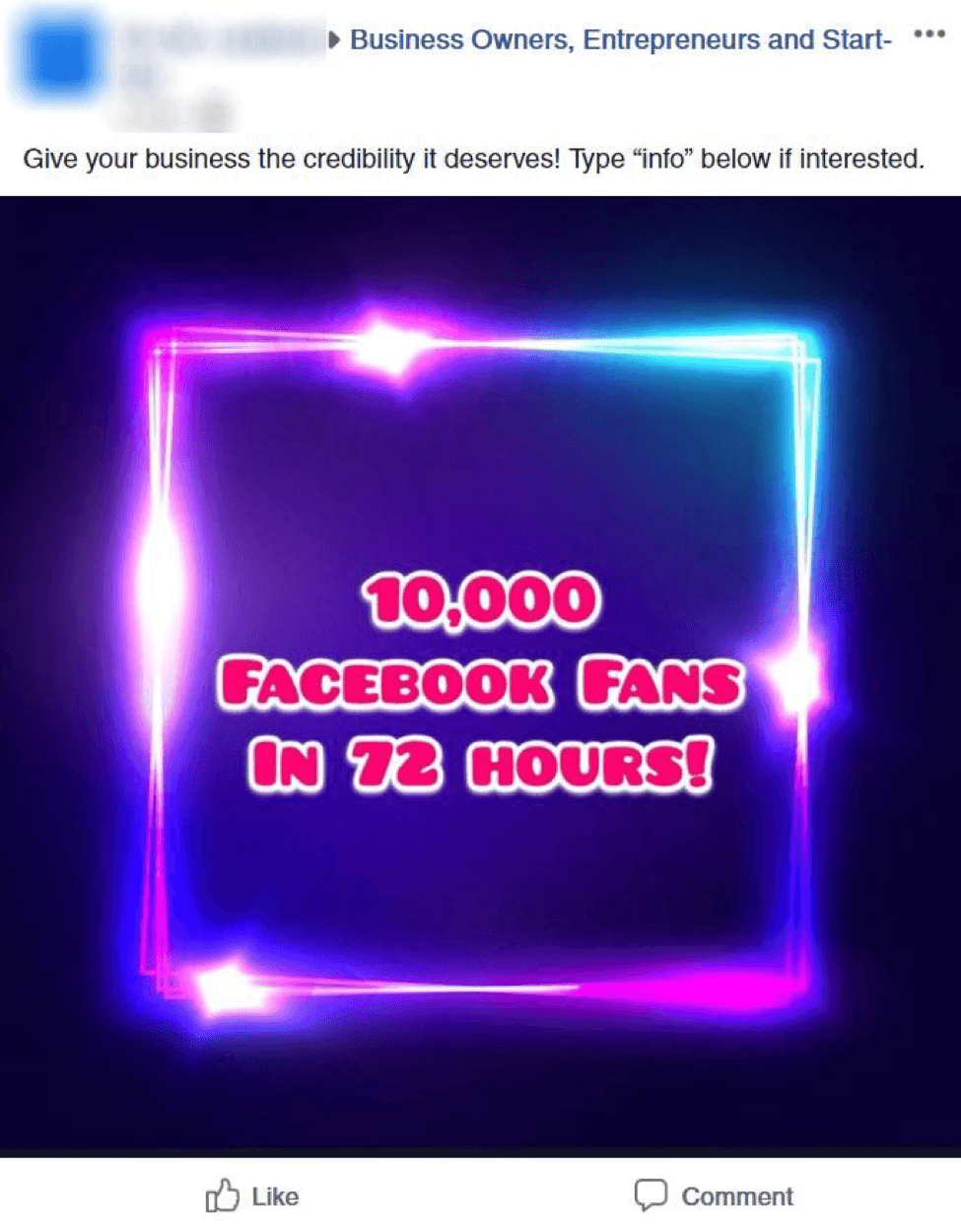
So say you get 1,000+ random likes this way. One day, you’ve amassed enough money to want to start a/b testing Facebook ads. (To learn how to make money on Facebook, grab your free book on Facebook advertising here).
Well, guess what?
One of Facebook’s most lucrative features affords you the ability to create what’s called a “lookalike audience”, an audience that resembles your Facebook page’s fans. But if your Facebook page is full of random likes, you won’t be targeting the correct prospects.
(Hint: You’ll be spamming in your attempt to monetize, meaning you’ll be throwing your money away to hurt your brand).
How to monetize the right way
To train you to think like a smart monetizer, this book will show you how to focus on providing value and a consistent brand experience, approach monetization with a mindset geared toward building a brand that lasts, and learn to effectively leverage online tools that will help you grow your business.
That means:
- If you’re a Youtuber, you won’t focus on video views.
- If you’re an Instagrammer, you won’t focus on likes.
- If you’re a blogger, you won’t focus on social media shares.
That said, yes, you can still refer to these metrics in context.
For instance, as a blogger, you could try to see if higher social media shares lead to increased conversion rates. (If they don’t, why are you paying attention to them?)
Sure, if you’re planning to “sell” your audience to other companies by exposing your fans to their products, then these vanity metrics will help you with your pitch.
But if you really want to earn extra money online, then forget these metrics.
You have more important things you need to focus on.
Here. Watch this video, a summary of the “One thousand true fans” article by Kevin Kelly.
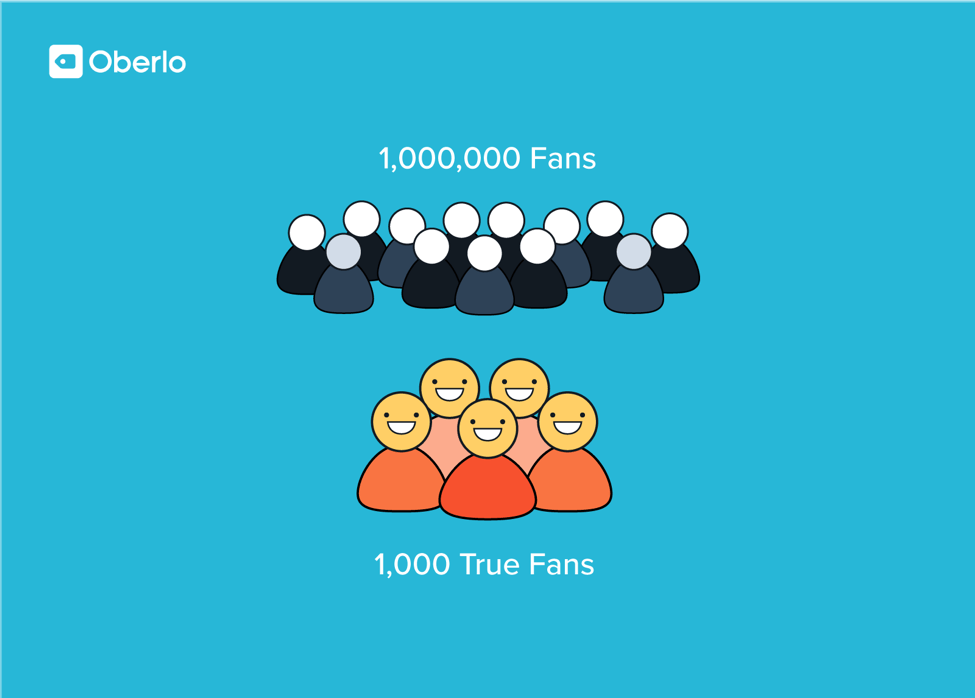
The gist of Kelly’s message is that you don’t need a million fans. You don’t even need 100,000. Truth is, you only need a small, active, and engaged audience.
If you can successfully position yourself as a “micro-celebrity”, you can make enough to live comfortably and achieve financial freedom.
Let’s take an example:
Say you launch a snowboarding channel on Youtube. What Youtube is willing to pay you for 100,000 views is peanuts compared to what you can make building a small community and selling 1,000 snowboards to your loyal fans.
Let’s do the math:
Even if Youtube decided to pay you a penny per view (not gonna happen), you’d still need 100,000 views to make just $1,000.
Compare that to making $100 profit per snowboard. You sell 1,000 snowboards in a year (completely doable), and you stand to make $100,000. (And that’s just off a single product)
The image below is from Snowboard Addiction’s Youtube channel. This is an example of good branding practice. I want you to notice three things here:
- Their featured video has less than 10,000 views.
- None of the videos is selling anything. (They’re providing educational value).
- Each video clearly links back to their website, where they do their selling.
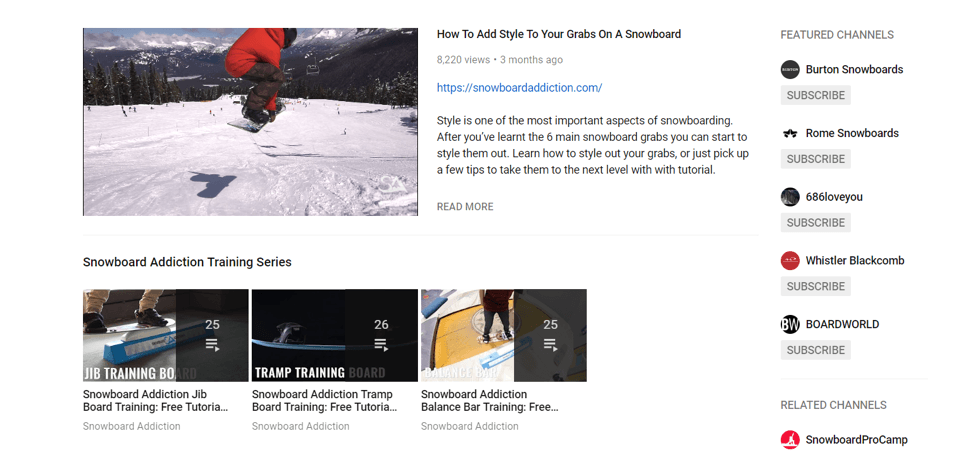
Let’s take another example:
This same principle applies, even when building a Facebook group.
Say you build one group, and you’ve got a million members, but it’s full of spammers.
Then you’ve got another group, and it’s only got 1,000 members, but guess what?
They don’t spam, they’re constantly posting, and they’re helping you build a community. They recommend you and your brand regularly to the newest members, and they’re actually helping you build and deliver value for free.
In other words, you can easily make a living with 1,000 true fans (but it’s a lot harder to monetize a million random visitors).
So, focus on building a small but loyal tribe, providing value, and building a brand that’s made to last.
[highlight]Interested in reading further? Check out Kevin Kelly’s original article on one-thousand true fans here.[/highlight]
Is monetization safe?
No business comes without its risks.
So how risk-averse are you?
Compared to traditional businesses, the comparison isn’t even fair. Any attempt at online monetization is a significantly less risky investment on any term.
Time to launch? Much shorter. You don’t even have to worry about registering your blog name with a governmental body or anything of the sort.
Money investment?
No comparison.
For instance, if you’re setting up a company, depending on the country you’re in, you might have to show evidence of a minimum amount of investment capital. Compare that with investing in a few tools every month at most when you’re just starting out.
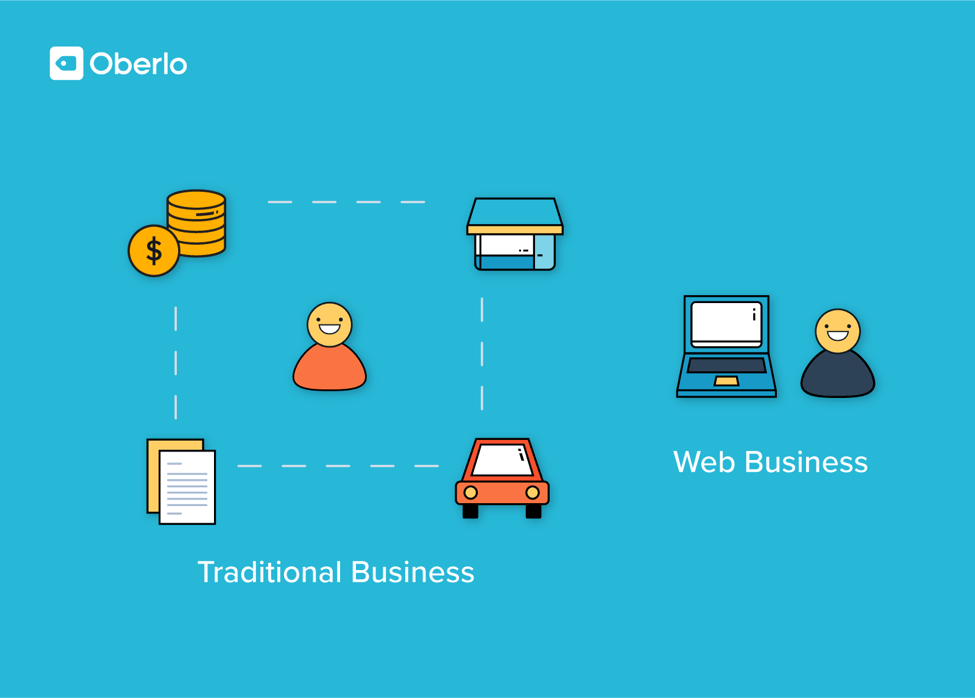
But hey, it’s not all rosy. Building a business is hard work, especially if you’re after long-term success.
Is monetization worth it?
Monetization isn’t for everybody.
That’s why I’ve tried to provide you thus far with some important concepts that will help you decide whether it will be worth it for you.
But if the thought of creating something of value for a specific audience (something they’re willing to pay for) gets you giddy too, then you can be pretty confident you’ll find monetization to be an extremely rewarding experience.
[highlight]Here’s a few more awesome ideas you can use to make extra money online.[/highlight]
1.2 How to monetize your website, blog, or social media channel
You can monetize pretty much anything online if you can find a large enough audience that sees value in what you’ve got to offer.
In other words, it must meet a specific need or interest for your target audience.
Let’s look at how you can begin monetizing what you’ve got.
Monetize your website! A logical starting point
Your website is a logical starting point for your monetization efforts.
Think of your website as your home base.
That’s because here you have complete control over everything.
Say you want to try your hand at Twitter monetization.
You have a Twitter account, which means you’re under Twitter’s thumb. If they choose to suspend your account, they can do so, and with little to no notice.
In addition, if Twitter goes belly-up tomorrow, so does your business.
I’m not saying you should neglect Twitter monetization, because, for the foreseeable future, Twitter will remain highly relevant.
But if you invest all your energy to monetize social media channels, rather than leveraging social media to drive traffic to your home base, you’re compromising control and putting yourself at the mercy of these popular-today, maybe-gone-tomorrow platforms.
The diagram below is a sample flowchart of how you can leverage social media channels to drive traffic to your website.
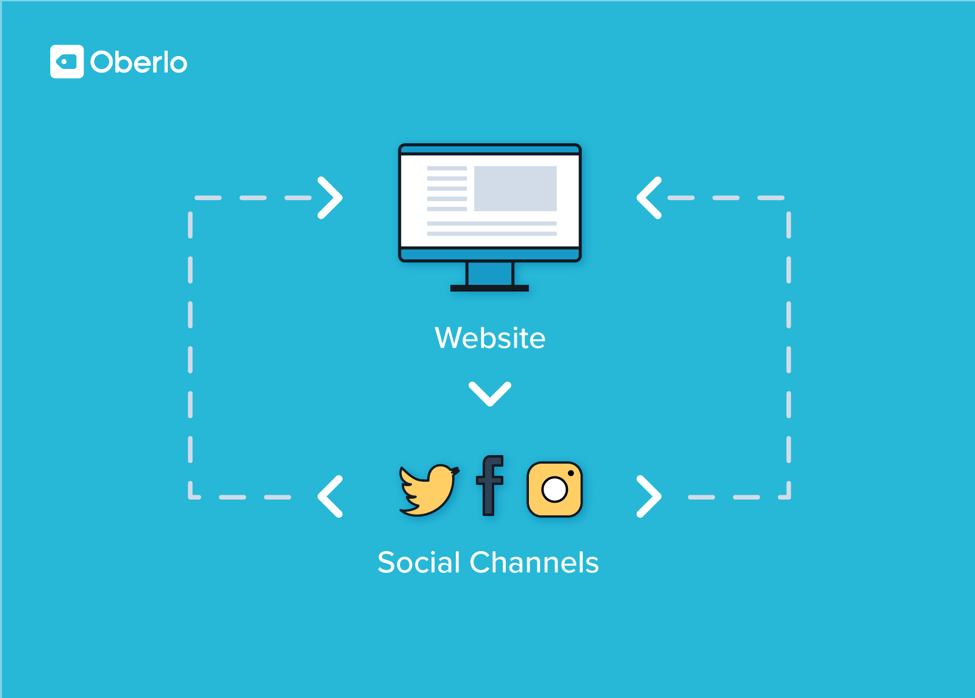
Let’s look at a blog example:
Julie loves knitting because it keeps her stress at bay. She runs Little Cotton Rabbits, a gorgeous website (pictured below) where she showcases her work.
She also has a blog, where she posts frequent updates. She’s got a sales page on her website too, not to mention a separate Etsy shop. (Can you think of a similar way to monetize websites?)
She doesn’t take orders from her personal blog, but she drives traffic to and from her blog to her shop.

We’ll look more closely at how to monetize social media in the later chapters.
When to monetize
If you already have an audience, you’re probably wondering when you can begin to monetize. Technically, you could start right away, but here’s an important principle you should burn into your memory:
Make sure what you’ll be offering is in line with their expectations.
If it isn’t, you’ll risk putting them off and doing damage to your brand.
Here’s a quick example:
If you’ve been providing free hip hop instrumentals on your website, and you want to start posting reviews of related affiliate products (anything ranging from music to production workstation reviews), you should first consider your audience’s expectations and sensitivities.
Is your typically street-savvy audience really going to appreciate your pushy attempts to earn from Internet marketing tactics?
Probably not.
But if you focus on providing value and you’re transparent about your affiliate marketing efforts (and maybe even present it as a way for your readers to support you), then you could even monetize while building a loyal fanbase.
Laying the groundwork (Choosing the right monetization strategy)
I don’t want to get too deep into monetization and strategies here.
A monetization strategy is simply a plan that is executed by a business to make a profit. Your monetization strategy will largely depend on your strengths and weaknesses.
For instance, if you’re a web developer, chances are you’ll probably have an idea or two on a SAAS (software as a service) subscription model, like Unbounce, the landing page builder.
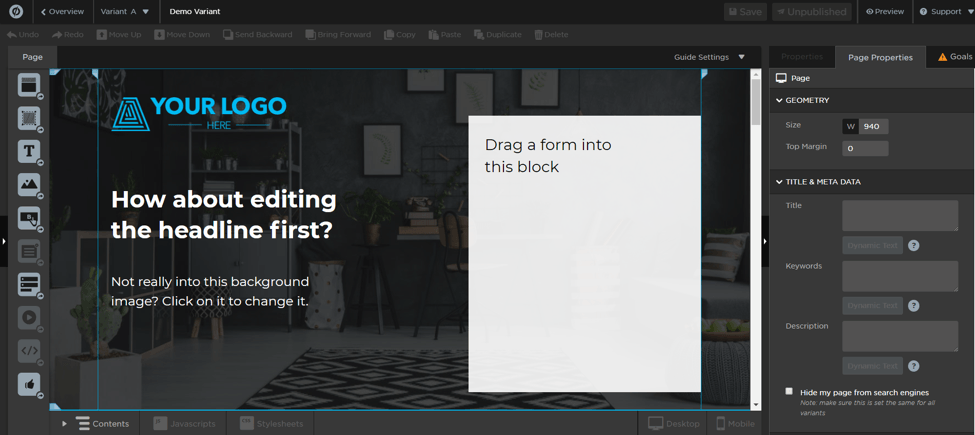
Or if you’re a real estate agent like Zane Wilson, you might want to monetize your website by using it as your primary lead generation tool.
(Here’s another advantage: After tinkering with your website data, you might discover that your out-of-town prospects tend to purchase at a higher rate, and after fewer meetings).
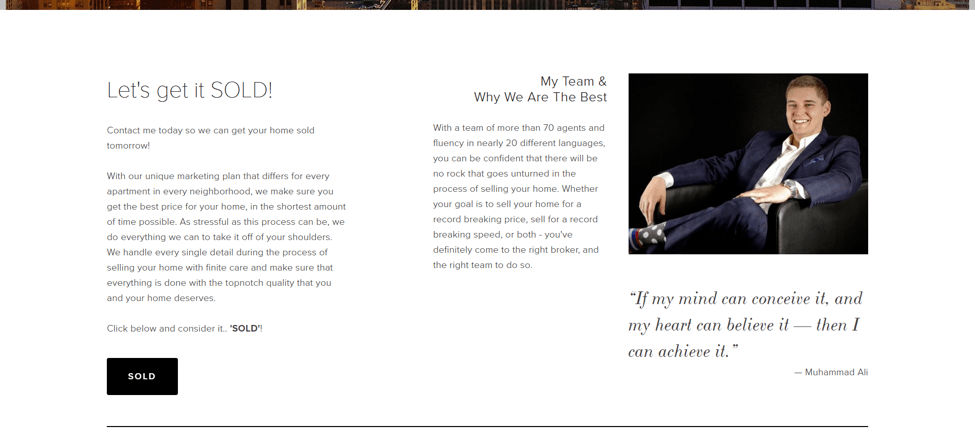
Can you monetize without an investment (aka for free)?
Let’s define “investment” real quick.
When people buy anything, they tend to associate the purchase with a cost. In business, you need to switch over to thinking of purchases in terms of investments.
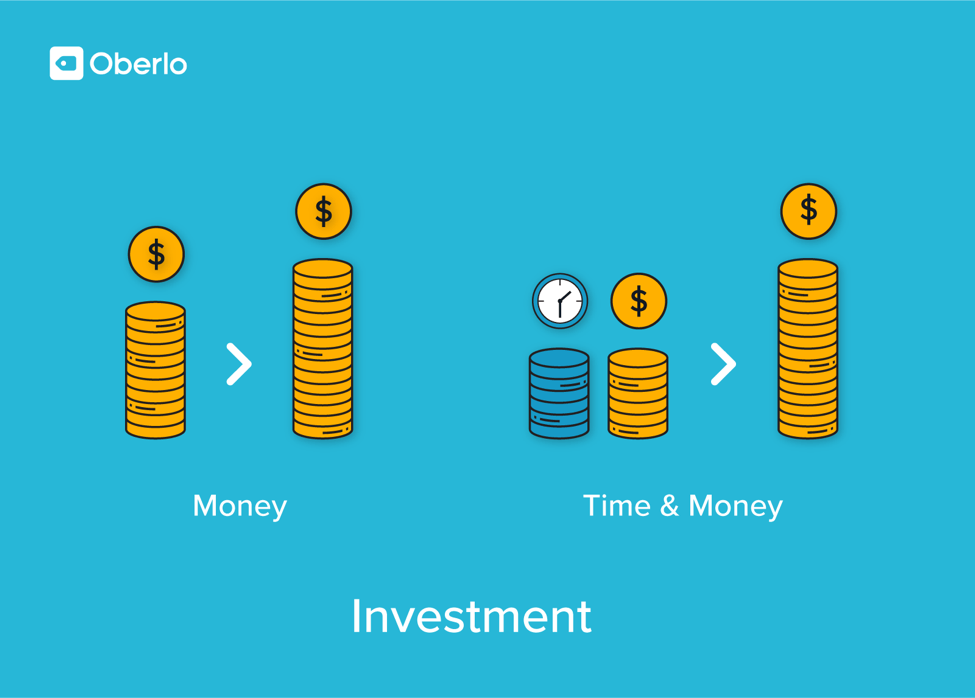
More importantly, this means not only thinking in monetary terms, but also viewing things like your time as an investment.
Let’s take an example.
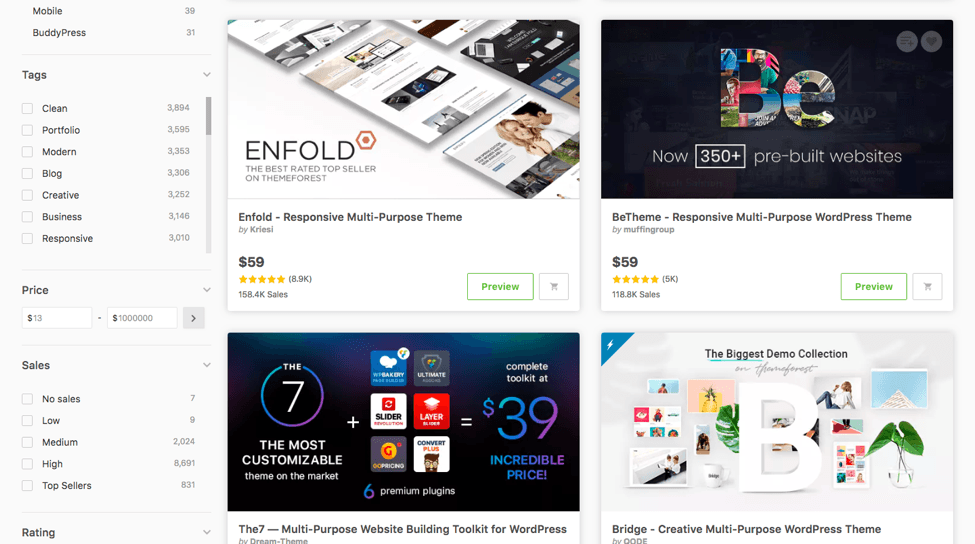
Say you’re looking for a WordPress theme for your blog.
The one you want is $50 (no small sum to scoff at), but it includes 1 year of technical support.
So maybe you decide you’ll try building your own site with a free website builder.
That means, instead of saving time to get you off the ground faster with your monetization efforts, you’ll definitely have to tinker with your site until you get it exactly the way you want it.
Not to mention all the technical issues you might run into throughout the year, which will definitely take up a lot of your time and risk frustrating at least a few customers.
How’s that $50 price tag looking now?
Monetization without ads
That said, monetization without ads is possible.
We’ll touch upon this briefly in the next chapter, on blogging.
But for now, just remember:
Don’t rely on ads, clicks, views, and so on.
Instead, focus on building a brand that lasts, one that fosters relationships with your customers and dazzles them consistently with awesome offers.
Relying purely on ads is a dangerous monetization strategy.
Sure, you’re bound to find some people that convert.
But will they help you promote your brand? Will they be satisfied enough with the outcome that they’re willing to vouch for you at every turn–or will they post negative reviews everywhere?
In other words, don’t rely on advertising dollars at the cost of your brand… because it’ll cost you.
Let’s go back to the 1,000 true fans skateboard example:
Say you want to earn from Google Adsense.
So you sign up and start posting banner ads on your site. Compared to selling skateboards to your fans directly, how much do you really think you can earn from Google ads?
(And is it really worth annoying your fans with these banner ads?)
So. To earn from Internet marketing, to really earn from your Internet initiatives, you can’t focus on selling ads to your audience.
If you really want to build something you can monetize meaningfully, you have to focus on creating a brand your fans will love.
Monetization tools: What should you know?
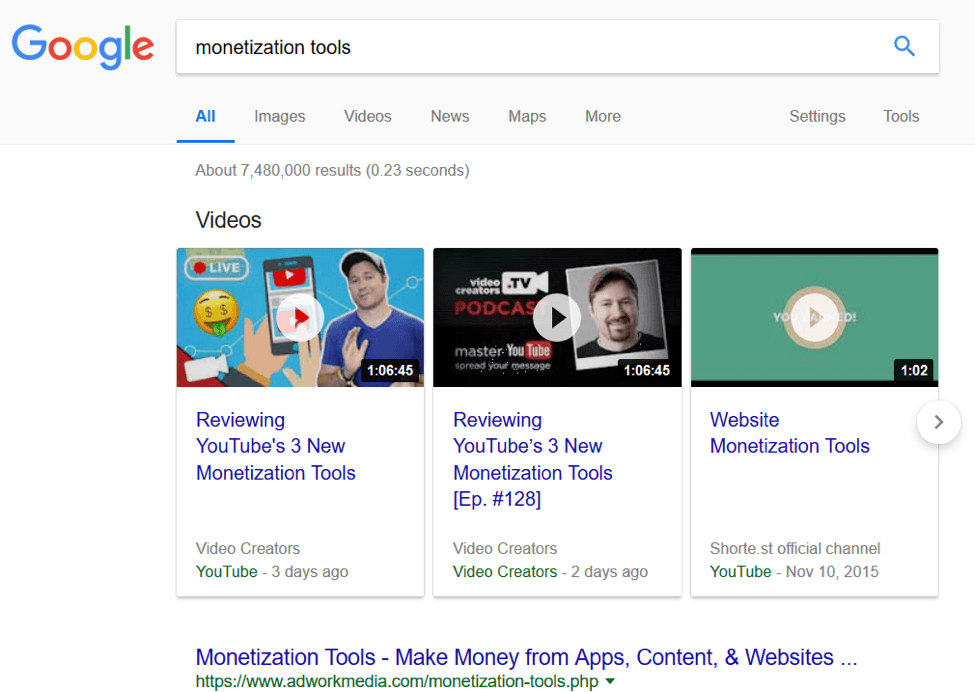
There are tools that will help you build your brand faster–but a quick Google search for “monetization tools” reveals a whopping 7,480,000 results.
This number should give you an idea of just how many monetization tools are out there.
Most of these tools won’t help you for two reasons:
- Most of them are not relevant to your monetization efforts.
- Out of those that are relevant, most of them won’t prove very useful.
That’s why it’s critical that you keep an eye out for salespeople who are trying to sell you the next best tool.
Remember: If something sounds too good to be true, it probably is.
So do your due diligence and thank me later.
How to pick the right monetization tools checklist
- Ask yourself, “Do I really need it? Or is it going to distract me more than help me?” (To answer this question, determine how a specific tool will contribute to your goals).
- Do your research.
- Ask around for recommendations.
- Read unbiased (unpaid) reviews from trusted sources.
- Try out the trial version. (If they don’t offer one, it doesn’t hurt to ask).
- Is there a free version? If you’re starting out, chances are you won’t need anything expensive and fancy.
Common monetization tools
The tools at your disposal will be highly dependent on your monetization strategy and your goals.
That said, there are some common monetization tools we should go over.
We’ll be working closer with these (and other) tools in the later chapters. (For example, in Chapter 3, which is about how to make money on Facebook, we’ll go over a couple Facebook-specific tools).
Design software
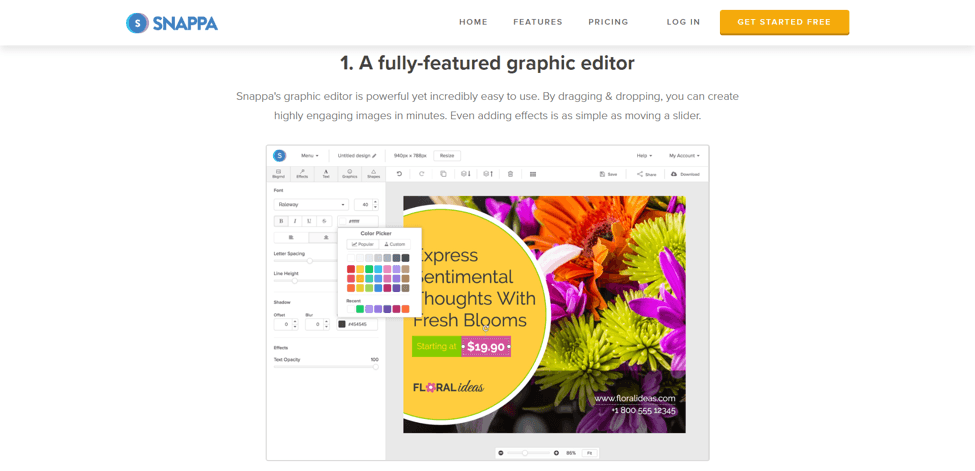
If you don’t have the chops for Adobe Photoshop or Illustrator, free (and paid) tools are available online that provide a much more user-friendly (and faster) way to get your graphics up and running.
Not to mention the countless creative commons sites (like Unsplash and Pixabay) that offer ready-to-use free images.
Plugins
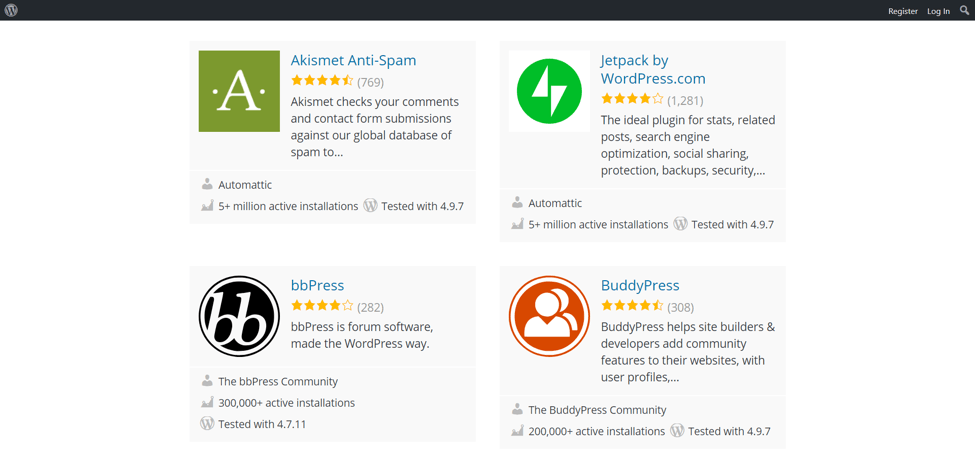
If you’re running a WordPress blog or a Shopify store, plugins are essential.
Both free and paid versions are available for most plugins, but it’s rare that a free version won’t suffice to meet your goals, especially when starting out.
Just check out this list of 20 free Shopify plugins to get an idea of what’s out there.
Email automation software
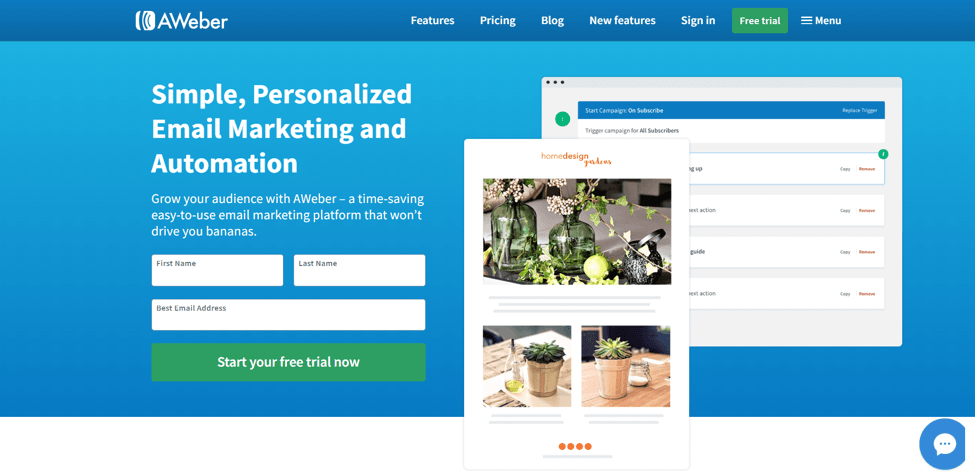
Designing beautiful emails can be a chore.
Keeping track of open rates can be a pain too (checking how many people open your emails after reading the subject line).
That’s why email automation software can be a massive time saver. A simple tool like AWeber can serve all of these purposes and help you organize email marketing campaigns with ease.
[highlight]If you’re serious about your desire to earn from Internet marketing, start reading about email marketing today. Here’s an in-depth introductory guide from Campaign Monitor. [/highlight]
Landing page builders
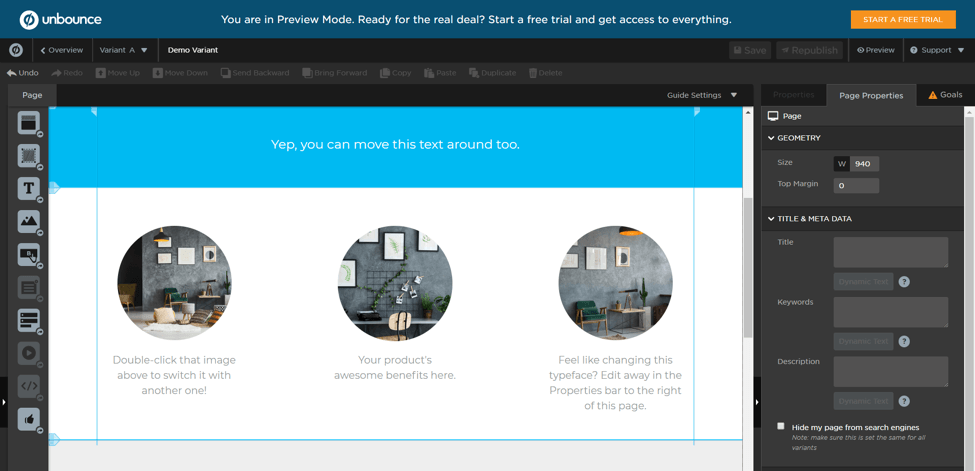
If you’re planning to sell something, you’re going to want to put together a few sales pages and start testing them against each other.
That said, there are also ways to make a quick buck without investing years of your time. This doesn’t necessarily go counter to the idea of building a brand that lasts. After all, just because you want to earn extra money online quickly doesn’t mean your brand has to suffer.
Let’s take an example:
Say you have an info-product, like an ebook containing a step-by-step blueprint on how to earn from Internet marketing.
You put it together easily using an ebook packaging service and published it on a WordPress site after purchasing a domain name on the cheap.
You used a free template as well as a design tool to quickly get your graphics up. Then, you used a landing page builder to quickly build yourself a couple versions of the same sales page.
You’re ready to push GO.
You plan to send half the traffic to one page, and the other half to the other page.
The one that converts better (makes you more money) is the clear winner.
You’ll rinse and repeat.
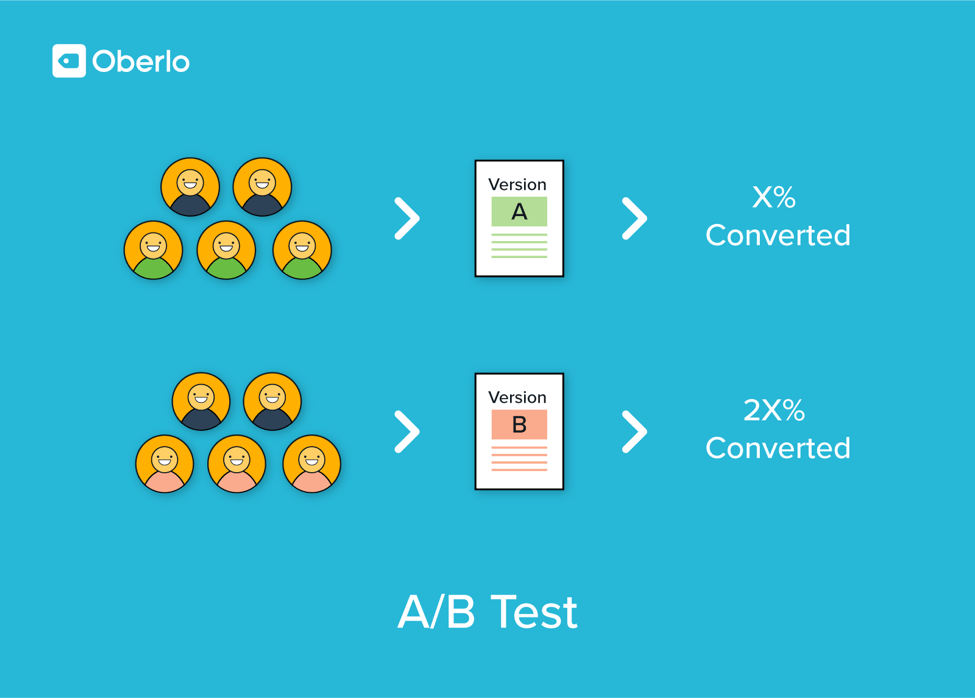
You’ll continue creating products and reapplying this approach, until you have a brand that’s known to sell info-products that provide tremendous value to your customers.
(Because of the speed to launch, among other factors, your brand won’t be the “prettiest-looking” on the block–at least, at first. But it will be effective, it can last, and most importantly, you’ll be providing value in exchange for money, instead of spamming the unexpected).
1.3 Does a monetization formula exist?
As you begin your monetization journey, you’ll find marketers and savvy sellers alike trying to push the next best monetization formula.
Sure, you can save a lot of time and money by investing in a course, but with a little research, you might even find that the knowledge you were willing to pay for was available online for free.
Is there a formula for success?
That said, there certainly is a formula for success.
This formula is composed of a few key ingredients. But forget George’s marvelous medicine. There’s no magic here. Only hard work and smarts.
So what does a smart monetizer look like?
A smart monetizer has her eye on the long game.
Forget the promises of overnight success. There’s no such thing.
If someone’s making it look easy, either they’re lying to you, or they’ve gotten so good at what they do that it looks easy, because it is–for them.
Sure, you could make a few quick bucks (and even a significant sum over the short term) if you just keep joining Facebook groups and spam them until you get kicked out.
Just keep at it, right? After all, there’s no shortage of Facebook groups.
Well, that’s the mindset of a spam artist. And it’s the fastest way to drive your brand into the ground.
What separates successful entrepreneurs from spammers is that they aim to build a lasting brand by providing value to their target audience consistently.
Coming up with ideas for a product or service
So when you think of a product or service you want to provide as a brand made to last, make sure it’s something your audience sees value in.
In other words, think about what you can offer, and what the audience interested in your offer would look like.
So if you’re an HR manager, you can offer…
- A free CV review
- A course on how to negotiate your way to a higher salary
- A CV rewriting service
- A book on how to increase your chances of getting hired
- A mock interview service
Now think about who these services and products will appeal to.
(Most likely, they’ll be people who are unhappy with their situation, or at least, they want to improve it somehow and are seeking meaningful ways to gain control over their work life).
Now let’s look at how we can communicate these needs to your audience.
Tapping into your audience’s needs: Stressing benefits, not features

We’ve already defined monetization in this book as making money by providing your audience with something of value.
But to earn extra money online, you can’t just begin advertising your products and services everywhere.
You’re not Starbucks. You don’t have the big bucks.
Which brings us to a critical business lesson.
It’s a very powerful yet simple concept, one many business owners seem to forget.
Here it is:
Know your audience.
If you don’t know your audience, you can’t speak to them in their own language.
In the earlier HR example, we defined your target audience as employees who are dissatisfied with their current situation.
But you can’t do much with this crucial information if you can’t communicate their needs to them in a believable manner.
So how do you do that once you’ve tapped into their needs?
Let’s look at another example.
Say you’re sourcing green tea from Taiwan. Your audience loves caffeine, but many of them are coffee aficionados.
So how do you sell them green tea?
It contains caffeine, but you risk alienating a huge chunk of your audience if you start pushing green tea too hard.
So don’t sell them on the features.
That means:
| Don’t tell them | Instead, tell them |
|
|
Yes, your audience comprises mainly coffee fanatics.
But these coffee fanatics have the same problems that plague other coffee drinkers:
Some of them could do without the jitters. Others might consume coffee primarily to stay sharp at work.
(Since green tea’s been scientifically proven to encourage greater communication between the left and right brain, and keeps you alert without the jitters, these could be potential selling points to convince your audience to test out your green tea).
Sound good?
Analyzing your audience (with tools)
Before we go, while we’re on the topic of connecting with your audience, we should cover two essential online tools.
In our day of big data, you can add these critical tools to help you analyze your audience.
Google Analytics
Google Analytics has been around since 2005, and it’s the most widely used data analysis tool in the world.
Even as a blog owner, it can give you powerful insights into your readers’ behavior, such as how much time they’re spending on specific pages, and which of your pages your visitors are landing on most frequently.
It’s a free tool, but if you’re planning to earn from Google ads, you’re going to want to start familiarizing yourself with it as soon as possible.
That’s because it can be paired with your Adwords account, meaning your attempts to earn from Google ads by leveraging the audience data you already have will be that much more effective.
Google Search Console
Google Search Console is arguably a more limited tool, but for keywords, it could be a goldmine, especially when you’re starting out.
With Google Search Console, you can carry out two important tasks:
- Submit a sitemap so Google knows your website exists.
- See which keywords your website is ranking for (info that could give insights into your next steps).
You can even check how many people read your description for a specific page on Google Search and decided to click through versus those who didn’t. (This should give you an idea of which descriptions you want to improve, especially if they’re for important pages).
[highlight]Google Academy offers free courses for Google Analytics. You can access them here. Also be sure to check out Brian Dean’s comprehensive guide on how you can use Google Search Console to boost your search engine rankings. [/highlight]



Chapter 1 Takeaways
This chapter provided a general overview of critical monetization principles.
So far, the most important points you should remember are to
- Focus on what’s important, not what makes you feel good
- Build a small community of active and engaged fans, rather than going for a million views and other vanity metrics
- Provide something of value to your audience, something they’re willing to pay for
- Think long term and build a brand to last. Overnight brands don’t survive for a reason, so give your brand a reason to succeed.
Now that you understand the importance of monetization, and how it can bring you the freedom you’ve always dreamed of achieving, let’s find out how you can make that dream a reality, starting with your blog.
Onto Chapter 2!

